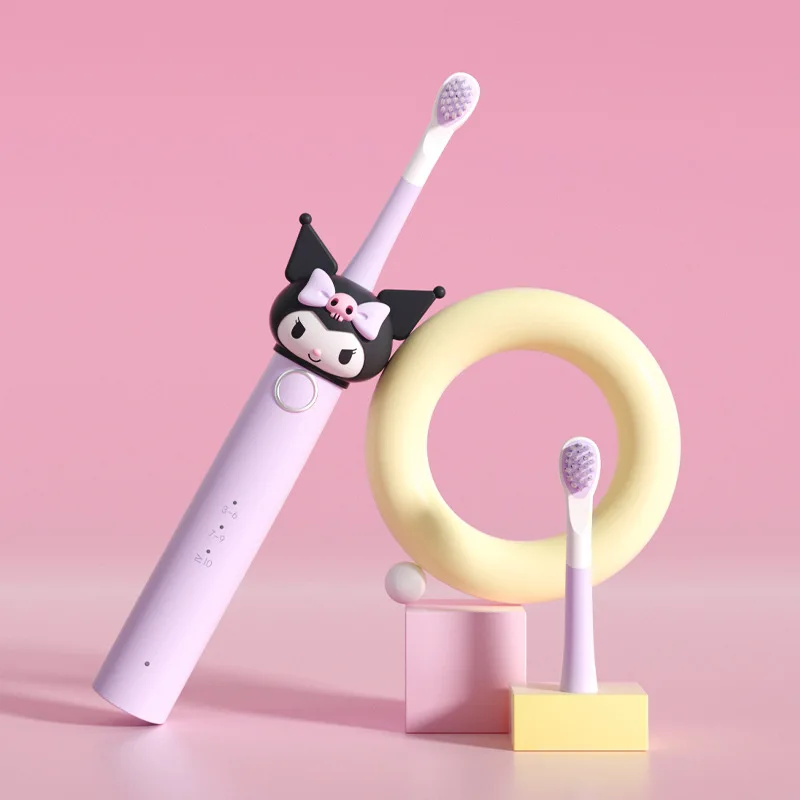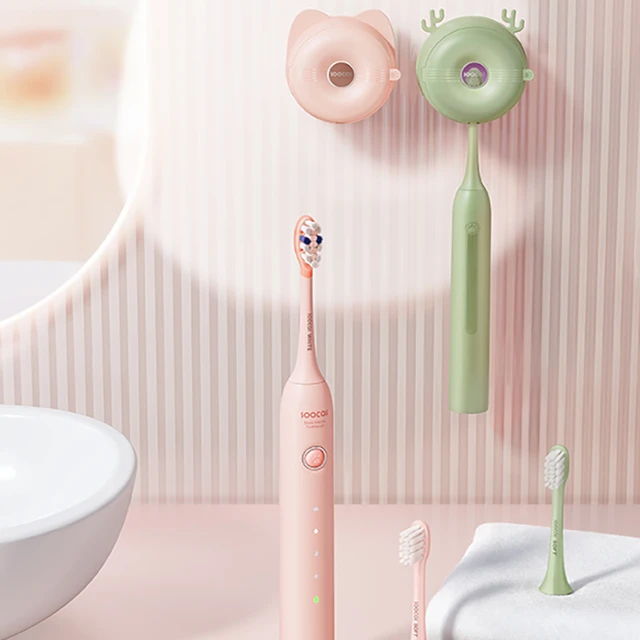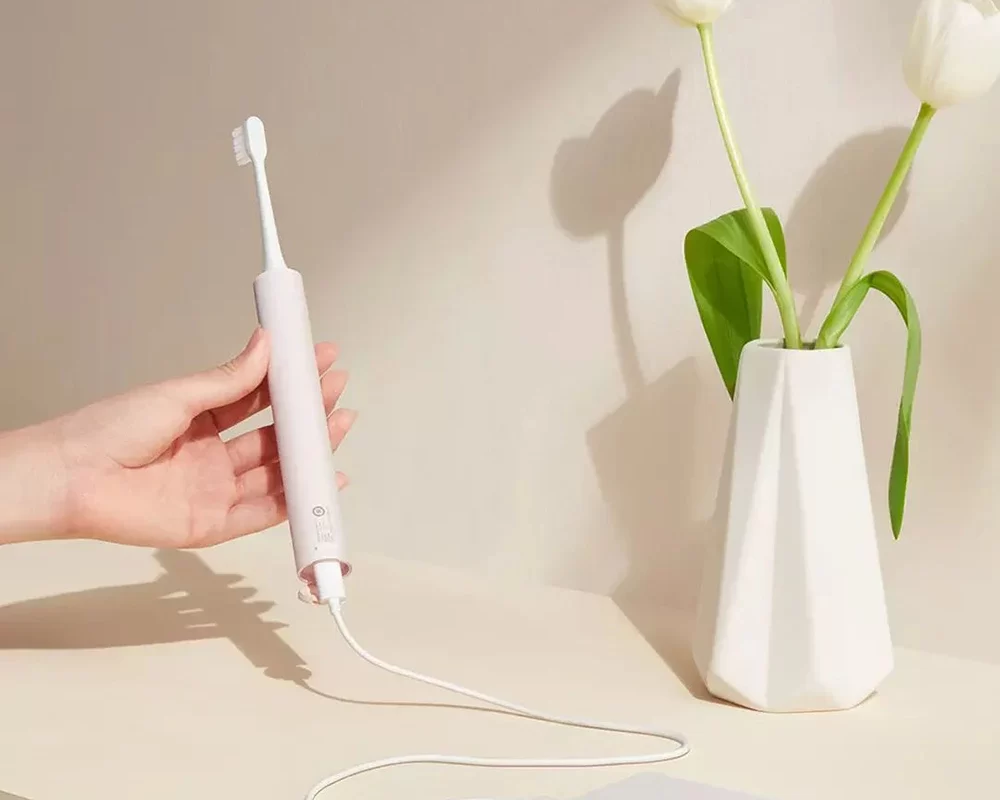Key Indicators to Recognize Toothbrush Wear and Tear
Recognizing when your electric toothbrush begins to show signs of wear and tear is vital for maintaining oral health. Look for these key indicators to determine if it’s time for a replacement:

Bristle Condition
Check your brush head’s bristles regularly. Frayed or splayed bristles suggest the need for a change. A worn-out brush head won’t clean teeth as it should.
Reduced Battery Performance
If your toothbrush holds less charge or dies quickly, the battery might be fading. Frequent charging beyond normal could mean it’s time for a new electric toothbrush.
Poor Vibration Strength
Weak vibrations could signal a motor issue. Less power means less effective brushing, which can lead to plaque buildup.
Handle Damage
Inspect the handle. Cracks or damage can affect function. A compromised handle can expose the interior to moisture, causing failure.
Unusual Noise
Listen for changes in sound. A louder or unfamiliar noise can indicate internal problems. Don’t ignore strange sounds coming from your toothbrush.
Overall Age
Consider the age of your electric toothbrush. Most have a lifespan of 3 to 5 years. Using one beyond this period might harm your oral care.
Understanding Electric Toothbrush Battery Longevity
Understanding how long your electric toothbrush’s battery will last is important. This affects how frequently you’ll need to charge the toothbrush. Here are some points you should consider about battery longevity:
Signs of a Fading Battery
Notice how long your brush runs on a single charge. If it’s less than usual, the battery might be weakening.
Charging Practices to Follow
Stick to best charging practices to help your battery last longer. Avoid leaving your toothbrush plugged in all the time.
Impact of Brushing Frequency
The more you use your toothbrush, the quicker the battery will wear out. Consider this when assessing battery life.
Rechargeable Batteries
Some electric toothbrushes have built-in rechargeable batteries. These can be more cost-effective in the long run.
By keeping these points in mind, you can have a better grasp of your toothbrush’s battery life and take steps to maximize it.
Charging Habits and Maintaining Battery Health
To ensure your electric toothbrush lasts as long as possible, adopt wise charging habits. Here’s what you need to know about maintaining battery health:
Charge Appropriately
Only charge your toothbrush when needed. Avoid overcharging by unplugging the device once it’s full.
Avoid Constant Charging
Don’t leave your toothbrush on the charger after it’s full. This degrades the battery over time.
Use the Right Charger
Always use the charger that came with your toothbrush or a certified replacement.
Observe Charging Indicators
Many electric toothbrushes have lights or symbols that show charging status. Follow these hints.
Keep It Dry and Cool
Store your toothbrush in a place away from moisture and heat. It helps preserve the battery.
Deep Discharge Occasionally
Some batteries benefit from a full discharge now and then. Refer to your manual for guidance.
By following these tips, you prolong the life of your toothbrush. Good charging habits are key to longevity.
 Tips for Extending the Life of Your Electric Toothbrush
Tips for Extending the Life of Your Electric Toothbrush
Taking good care of your electric toothbrush can help it last longer. Follow these tips to get the most out of your toothbrush and save money in the long run.
Use it Properly
Brush gently to avoid damaging the bristles or the motor. Excessive pressure doesn’t mean a better clean.
Regular Cleaning
After each use, rinse the brush head and handle. Remove toothpaste and debris to prevent buildup.
Store Correctly
Keep your toothbrush upright and in a dry place. This prevents water from getting into the handle.
Change Brush Heads
Switch brush heads every 3-6 months. Worn bristles can’t clean teeth well and may harbor bacteria.
Moderate Charging
Charge your toothbrush only when needed. Don’t leave it on the charger after it’s full to maintain battery health.
Avoid Dropping
Handle your toothbrush with care. Drops can damage the internal components or the brush heads.
By including these habits in your routine, you can extend the life of your electric toothbrush. One more thing, don’t forget the discounts mentioned in reference blogs when purchasing new brush heads or electric toothbrushes.
The Impact of Brush Head Replacement on Toothbrush Longevity
Replacing your electric toothbrush head is crucial for maintaining both oral health and the longevity of the toothbrush itself. Here are some ways that regular replacement of the brush head can extend the life of your electric toothbrush:
Ensures Effective Cleaning
Old, worn-out bristles won’t clean your teeth well. Changing the brush head keeps cleaning effective.
Reduces Bacterial Buildup
Brush heads can harbor bacteria over time. Fresh heads mean fewer bacteria and a cleaner mouth.
Protects Your Toothbrush Motor
Using a frayed brush head makes the motor work harder. New heads help the motor last longer.
Keeps Battery Drain in Check
A damaged brush head can strain the toothbrush battery. Replacing it can prevent extra battery drain.
Avoids Wear and Tear
Regular replacement avoids damage to the toothbrush’s head and neck. This keeps the interface secure.
Remember to replace your electric toothbrush head every 3 to 6 months. This not only ensures a superior clean but also contributes to the overall longevity of your electric toothbrush. Stay vigilant for signs of wear, like frayed bristles, and replace when needed. Combined with proper charging habits, this simple maintenance can significantly extend the life of your toothbrush.
Evaluating Electric Toothbrush Models for Durability
When choosing an electric toothbrush, durability is a key factor to consider. Factors like brand reputation, battery quality, and build materials can impact how long your electric toothbrush lasts. Here’s what you should look for to ensure you select a durable model:
Brand Quality
Pick a toothbrush from a reputable brand. Well-known brands often produce more reliable and lasting products.
Battery Life Expectancy
Look for toothbrushes with long-lasting batteries. They should hold a charge well and have a long overall lifespan.
Construction Materials
Choose toothbrushes made from high-grade materials. Quality construction can withstand daily use and resist wear.
Brush Head Design
Examine the brush head’s design and material. Durable brush heads maintain firmness over months of use.
User Reviews
Read user reviews for real-life insights. Customers often share their experiences with a toothbrush’s durability.
Warranty and Support
Check for a good warranty. Brands confident in their products will offer solid customer support and warranties.
Modes and Features
Additional modes or features should not compromise durability. Ensure the toothbrush can handle its various functions over time.
Selecting an electric toothbrush with these considerations in mind can lead to a better investment in your oral health. A durable brush can save you money and hassle in the long run. Remember, a sturdy electric toothbrush should last between three to five years with proper care and maintenance.
The Economics of Electric Toothbrushes: Cost vs. Benefits
When weighing the cost versus benefits of electric toothbrushes, several factors come into play.
Long-Term Savings
Though electric toothbrushes have a higher upfront cost, they can lead to long-term savings. Users often see a reduction in dental expenses due to better oral hygiene.
Battery and Replacement Heads Cost
Electric toothbrushes require battery changes or charging, and regular replacement of brush heads. These ongoing costs must be considered.
Enhancing Oral Health
The benefits of improved oral health can outweigh the cost. Electric toothbrushes provide superior plaque removal and gum care.
Durability and Reliability
Investing in a quality electric toothbrush can ensure durability, requiring fewer replacements over time compared to cheaper models.
Features and Functionality
Advanced features like timers and pressure sensors offer added benefits that promote efficient brushing habits, contributing to the overall value.
Comparison with Manual Toothbrushes
Electric toothbrushes often last longer and perform better than manual ones. This can justify the initial investment.
Brand Reputation
Selecting a toothbrush from a reputable brand with a good warranty can mitigate risk and secure your investment.
In conclusion, while the upfront cost of an electric toothbrush may be higher, the long-term benefits and cost savings in dental health care can make it a wise choice. Proper maintenance and careful selection based on durability and features add to the cost-effectiveness of electric toothbrushes, making them a beneficial tool in daily oral care routines.
 FAQs on Electric Toothbrush Usage and Maintenance
FAQs on Electric Toothbrush Usage and Maintenance
When dealing with electric toothbrushes, several common questions arise about their use and upkeep. To guide users, here are answers to some frequently asked questions:
How long does an electric toothbrush last?
Most electric toothbrushes have a lifespan of 3 to 5 years. But, this varies with use and care.
When should I replace my toothbrush head?
Change your brush head every 3-6 months. Watch for frayed bristles as a sign.
How often should I charge my electric toothbrush?
Charge it every couple of weeks, or when the battery runs low. Avoid overcharging.
Can an electric toothbrush get wet?
Yes, most are designed to handle water. But, do not submerge them fully.
Is it bad to leave my electric toothbrush on the charger?
Yes, constant charging can harm the battery. Unplug after it’s fully charged.
What is the best way to clean my electric toothbrush?
Rinse the brush head and handle after each use. Clean with soap periodically.
Should I use a particular toothpaste with my electric toothbrush?
No specific toothpaste is needed. Use what works best for you.
By following these tips and practices, you can ensure the longevity and effectiveness of your electric toothbrush, thus promoting better oral health.

